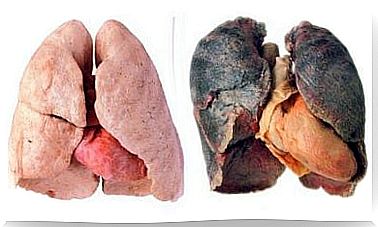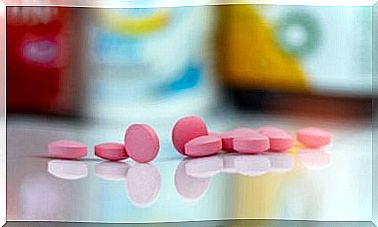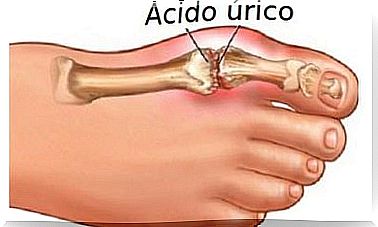All About Hypoglycaemia During Sports

Low blood sugar is known as hypoglycemia. This fall is characterized by causing symptoms such as fatigue, dizziness, palpitations, sweating, pale skin and tremors. It is a relatively common condition during exercise, whether aerobic or anaerobic. Today, we’ll tell you everything you should know about hypoglycaemia while playing sports.
Just because it’s common doesn’t make it healthy. You’ve probably tried it many times, or seen it happen in marathons or cycling races. Next, find out why this happens and what you can do about it.
Why does hypoglycemia occur during sports?
Before talking about hypoglycemia when playing sports, you must first understand what happens in your body when you do physical activity. Glucose is the gasoline your body uses to function. When you play sports, your body uses glucose to offset the energy expenditure involved in the physical and mental effort involved in exercising.
It is stored in muscle (in the form of glycogen), in the liver, and in the form of fat when there is excess. Because they are easier to use, the body prefers to use the first two deposits. If this is not enough to handle the activity you are doing, you will experience exercise-induced hypoglycemia.
In other words, your body will require a greater amount of glucose to face the physical effort of the moment. If your reserves are not enough, there will be an imbalance in the body. In very simple terms, it’s like you want to travel a thousand kilometers on half a tank of gas.

reactive hypoglycemia
Reactive hypoglycaemia, also known as “postprandial hypoglycaemia,” is the drop in blood glucose levels right after each meal (preceding a rapid rise). It is a natural process that occurs in all people, but in some the decrease in values is less than in others.
It usually occurs between 1 and 4 hours after eating a food. At some point during this period, your glucose levels will drop below normal for your body. If you exercise at this time, you are much more likely to have hypoglycemia.
The drop in values is conditioned by the type of food you eat. The glycemic index (GI) will determine how quickly sugar will be metabolized in the body. It is rated on a scale of 1 to 100 and is divided into high, medium and low. Lentil, for example, has a GI of about 26 (low), while white bread has a GI of 73 (high).
If your diet revolves around foods with a high glycemic index, they will be used up more quickly in your body, which will also shorten reactive hypoglycemia. Later, we’ll explain what you can do to alleviate this disorder.
Diabetes and hypoglycemia during sports
Another explanation for exercise-related hypoglycemia is found in diabetes. In fact, most of the time, it is present in the context of this condition. The dosage of insulin or antidiabetics administered orally may not correspond to the metabolic needs of the moment.
In these cases, the sequelae can manifest during sports practice or even 24-48 afterward. The insulin/antidiabetic dose, the patient’s diet, and sudden changes in training schedules combine to generate such episodes.
Overall, these are the three reasons why blood glucose drops. According to the researchers, most cases occur 20 minutes after the beginning of the activity.
Furthermore, studies indicate that, in addition to the symptoms described, this condition can alter thermoregulatory adaptation and weaken muscles and tendons (which translates into an increased risk of injury).
Tips to prevent exercise-induced hypoglycemia
There are many things you can do to avoid this condition. The most important thing is to modify your diet according to the type of activity you are doing. Every athlete, whether amateur or professional, must maintain a diet that meets their energy demands.
If you don’t, you will stop progressing in your discipline and expose yourself to those episodes that put your health at risk. Even if the chosen program is personalized, it is recommended to avoid the classic distribution of three meals a day, replacing them with six meals throughout the day.

According to the researchers, supplements and carbohydrates should play a prominent role. Still, you should include other nutritional groups to maintain a balanced diet.
You should also avoid skipping breakfast and going out to train on an empty stomach (regardless of what activity you do). It is known that most cases of low glucose occur when people train under these conditions. Other things you might want to keep in mind are:
- Consult a nutrition expert to design a meal plan based on your caloric needs.
- Avoid including only foods with a high glycemic index in your diet.
- Use supplements if you do high intensity workouts.
- Check your blood glucose regularly if you are a diabetic patient.
- See a specialist if you have diabetes and have these episodes.
- Make sure you eat well before and after each workout.
- Drink plenty of fluids, preferably water. Reduce your consumption of coffee, alcohol, sugary drinks and other “substitutes”.
- Create habits according to the times you choose to train.
- Have a general health check with a qualified physician.
In summary, maintaining a healthy lifestyle will help you avoid sports hypoglycemia. If this situation occurs frequently, don’t hesitate to consult an expert. Some metabolic disorders and underlying illnesses may be altering the way your body uses the glucose you consume.









